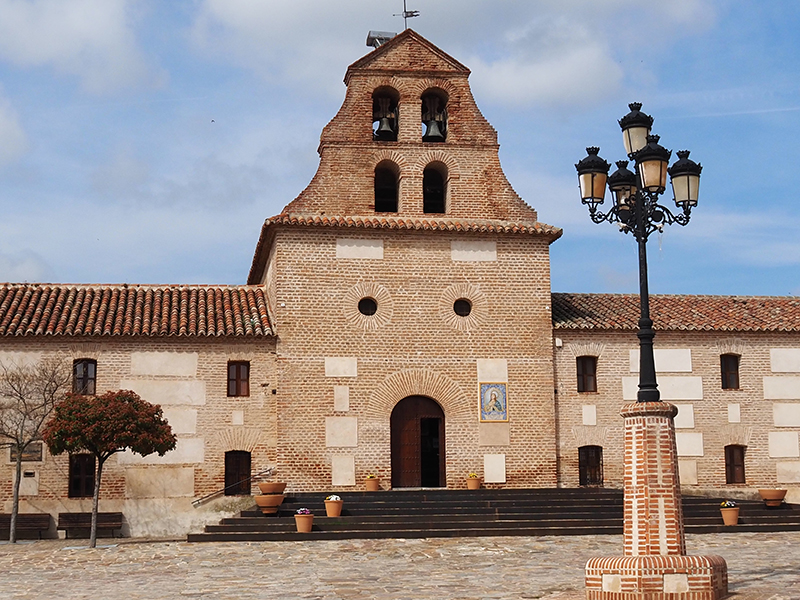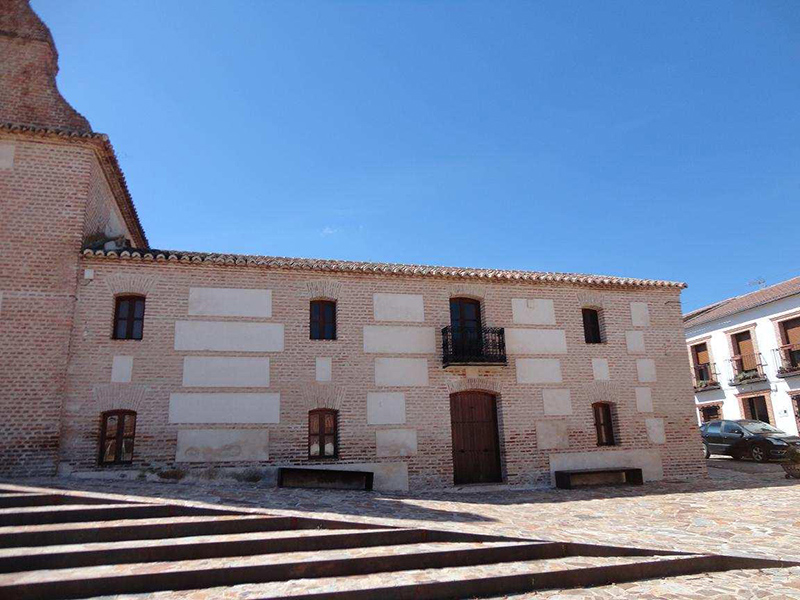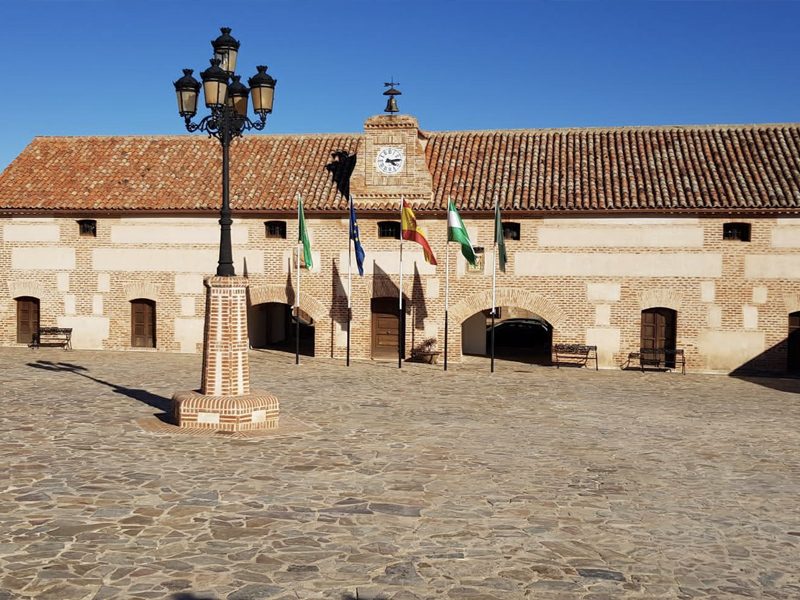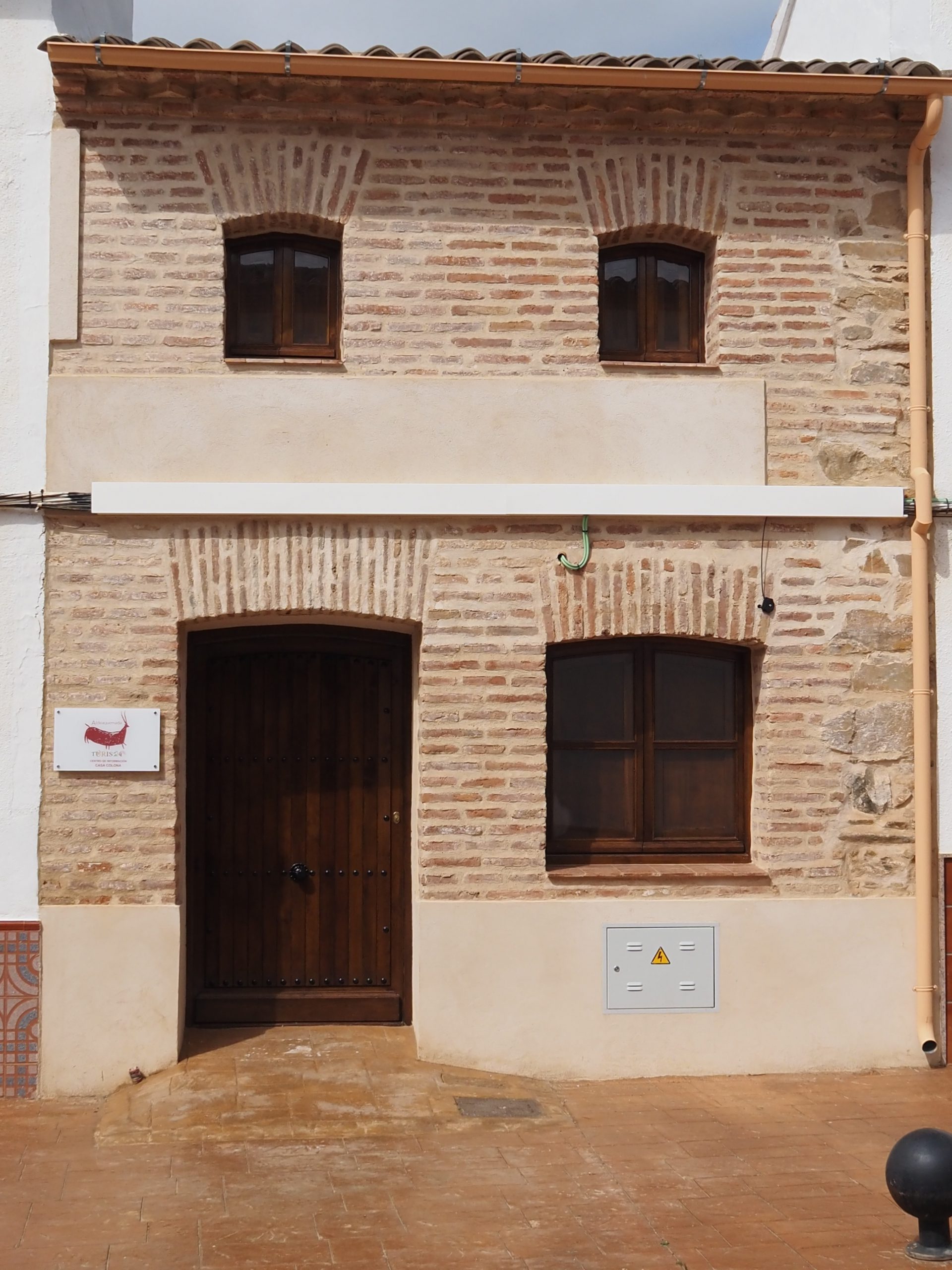Attractions
HERITAGE AND CULTURE
The history of Aldeaquemada is linked to the Sierra Morena New Populations project undertaken by King Carlos III in the 18th century. As an example of its notoriety, it stands out that most of its current architectural heritage corresponds to this historical stage.
This town in Sierra Morena offers one of the best preserved historic centers of all the colonies, respecting its urban layout and its most unique monumental heritage, giving it a great personality.
Church of the Immaculate Conception:
Initially a house blessed on February 8, 1768, it served as a provisional oratory for the parishioners until the opening of the Church on January 8, 1771.
Due to the danger of collapse, a provisional oratory was reopened in the lower part of the nearby inn in 1785, while the current Church was being built. The Immaculate Conception is received by Carlos III, as patron saint of the Kingdoms of Spain and of the New Populations.

Parish Priest's house
This building was built at the end of the 18th century, in a colonial style. It is located to the right of the Church. It includes the sacristy within its structure and it is communicated with the Church

Commander’s house of the civil guard
Building from the end of the 18th century, located on the left side of the Church.
This building, together with the priest’s house, are the only buildings that had a balcony as it was the seat of civil power in the parish.
Until the year 1835, date of the cessation of the Fuero de las Nuevas Poblaciones, it was the house of the civil commander, a position appointed by the Intendente de las Nuevas Poblaciones. Later, this building became the Town Hall and is currently the Home for the Retired.
On its side facade stands out a sundial, also colonial.

Real Pósito de Diezmo y Labradores
Building built in 1792, replacing a previous one, in order to be a grain regulating warehouse
Although all the Nuevas Poblaciones had this type of building, only the one in Aldeaquemada acquired monumental dimensions, occupying an entire block and rivaling in importance the Church, the house of the parish priest and the House of the civil commander.
The clock, with its original machinery, is a symbol of the definitive creation of the municipality from the year 1835.
It is currently the seat of the Aldeaquemada City Council.

The houses of the founding
The houses of the founding period usually have simple facades, with a main door, two windows on the ground floor and two small openings in the upper part or chamber.
The first typology presents stone on the facade, slate or quartzite, finishing with lime
The second type of facade is based on the models of the Church, the granary, and the houses of the civil commander and the parish priest, being made of brick and alternating mortar panels that over time the facades were whitewashed.
Currently is the Tourism Office of Aldeaquemada

Los Molinos
Also clearly related to the agricultural past of the population, the flour mills were built fundamentally in colonial times, taking advantage of the river courses.
Currently, the resof the Guarrizas or La Cimbarra river mill are preserved




